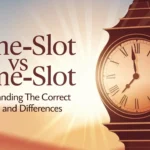Have you ever found yourself stuck between saying “at the house” or “in the house”? It’s a common conundrum, and getting it right can make all the difference in how your message is received.
The difference between “at the house” and “in the house” isn’t huge, but it’s still significant enough to cause confusion. Both phrases refer to locations, but they are used in different contexts.
In this article, we’ll break down the difference between these two prepositional phrases and show you exactly when and where to use each one. We’ll discuss the specific situations where each phrase fits best, and we’ll share common mistakes so you can avoid them.
Whether you’re talking about an event, a meeting, or just hanging out, knowing when to use “at” versus “in” will make your communication clearer and more precise. Let’s dive in and sort this out once and for all.
Understanding Prepositions: A Quick Recap
Before we dive into the specifics of “at the house” and “in the house,” it’s helpful to first understand what prepositions are and why they matter. A preposition is a word that shows the relationship between a noun (or pronoun) and another part of the sentence. In simple terms, it indicates location, direction, or time.
For example, words like “at,” “in,” and “on” are all prepositions. They help us explain where something is or where it’s happening. The difference between “at” and “in” can be subtle, but it affects the meaning of your sentence. The choice of preposition will help the listener or reader understand whether you’re focusing on the location itself or the specific position within that location.
When we talk about being “at the house” or “in the house,” we’re focusing on two different things. “At the house” refers to a more general sense of being near or at the location, while “in the house” zooms in on being inside the structure. Now, let’s look at these phrases in more detail.
“At the House” – The Broad Context
The phrase “at the house” typically refers to a general location, not necessarily inside the house. When you say you’re “at the house,” you’re saying you’re near or around the house, but you’re not specifying if you’re inside or outside.
When to Use “At the House”
Here are some situations where you would correctly use “at the house”:
- Meeting or Gathering: If you’re attending an event or meeting at someone’s house, you’ll use “at the house.”
- Example: “I’ll meet you at the house for the party.”
- General Location Reference: If you’re simply indicating that you are at the house without specifying whether you are inside or outside, “at the house” works.
- Example: “I’m at the house right now, waiting for you.”
- Location for an Event: If something is happening at the house, such as a party, barbecue, or meeting, “at the house” describes the event’s location.
- Example: “We’re having a barbecue at the house this weekend.”
Common Mistakes with “At the House”
It’s easy to misuse “at the house” when you really mean you’re inside. If you’re inside the house, you should say “in the house.” For example:
- Incorrect: “I’m at the house cleaning.”
- Correct: “I’m in the house cleaning.”
Using “at the house” when you’re clearly inside might confuse the listener, as “at” implies a more general location or even the area outside the house.
“In the House” – The Specific Context
On the other hand, when you say “in the house,” you are specifying that you are inside the physical structure of the house. This phrase focuses on the position inside the house, whether you’re in a specific room or just somewhere within the house’s walls.
When to Use “In the House”
Here’s when “in the house” is the right choice:
- Indicating Your Location Inside: When you’re referring to being physically inside the house, you use “in the house.”
- Example: “I’m in the house right now.”
- Specific Activities: If you’re doing something inside the house, like cleaning, cooking, or working, you’ll use “in.”
- Example: “She’s in the house making dinner.”
- Emphasizing the Indoors: If you want to emphasize that you are indoors, “in the house” is the correct phrasing.
- Example: “The kids are in the house playing video games.”
Common Mistakes with “In the House”
Sometimes people mistakenly use “in the house” when they simply mean being near the house or around it, especially when they’re referring to a meeting point. Here’s an example:
- Incorrect: “I’ll be in the house by 3 PM.”
- Correct: “I’ll be at the house by 3 PM.”
The key difference is that “in the house” specifies being inside, while “at the house” just means being at the location, whether inside or outside.
Key Differences Between “At the House” and “In the House”
While “at the house” and “in the house” both refer to the house, their meanings are distinct. Let’s break it down further:
Location vs. Position
- “At the house” refers to being at the location of the house, but doesn’t specify whether you are inside or outside.
- “In the house” refers specifically to being inside the house, within its walls.
Action vs. State
- “At the house” often refers to a meeting, event, or action happening at the location.
- “In the house” emphasizes an ongoing activity that takes place inside.
Visual Clarity
- “At the house” gives a vague sense of your proximity to the house, without clarifying if you’re outside or inside.
- “In the house” provides clarity about your exact position — you are physically inside the structure.
Real-Life Examples and Situations
To help you better understand these differences, let’s look at some real-life scenarios where you might use “at the house” or “in the house.”
Scenario 1: Describing a Gathering
- “We’re having a barbecue at the house” – In this case, you’re simply stating that the event is at the location of the house. You’re not indicating whether you’re inside or outside.
- “We’re hanging out in the house” – Here, you’re specifically saying that everyone is inside the house, not outside in the yard or on the porch.
Read More: Time Slot vs Timeslot: Understanding the Correct Usage and Differences
Scenario 2: Discussing Events or Activities
- “I’ll be at the house by 3 PM” – This means you’ll arrive at the house, but it doesn’t specify whether you’ll be inside or outside.
- “I’m in the house setting up for the party” – This clearly tells the listener you are inside the house, preparing for the event.
Scenario 3: Clarifying Your Whereabouts
- “I’m at the house waiting for you” – You could be outside, sitting on the porch or in the driveway, waiting.
- “I’m in the house, come in!” – This explicitly tells the other person you’re inside and they should come inside too.
Scenario 4: Using Both in the Same Sentence
- “I’m at the house, but I’m not in the house yet” – This might happen when you’re at someone’s house but you’re still outside, maybe unloading the car.
Common Mistakes to Avoid
To help you sound more natural and precise, here are some common mistakes to watch out for:
Using “At” when You Mean “In”
When you’re talking about being physically inside the house, use “in” rather than “at.”
- Incorrect: “I’m at the house cleaning.”
- Correct: “I’m in the house cleaning.”
Using “In” when You Mean “At”
If you’re referring to the location of the house but not necessarily inside it, use “at.”
- Incorrect: “We’ll meet in the house later.”
- Correct: “We’ll meet at the house later.”
Avoiding these mistakes will make your communication clearer and more accurate, ensuring that your listener understands exactly where you are or where the event is taking place.
Conclusion
Now that we’ve broken down the differences between “at the house” and “in the house,” it’s clear that each phrase has its own specific use. “At the house” refers to a general location, while “in the house” refers specifically to being inside the house. By understanding these distinctions, you can avoid confusion and express yourself more precisely.
Next time you need to talk about your whereabouts or an event happening at someone’s home, remember which preposition fits the context. Whether you’re relaxing inside or meeting people at the house, you’ll be ready to use the right words.
Frequently Asked Questions (FAQs)
1. What is the main difference between “at the house” and “in the house”?
The main difference is that “at the house” refers to the general location of the house, whether inside or outside, while “in the house” specifically means being inside the house.
2. Can “at the house” mean being inside the house?
Not necessarily. “At the house” is more general and can mean being near, outside, or inside the house, but it does not specify an exact position.
3. Which is correct: “I am at the house” or “I am in the house”?
Both can be correct depending on the situation:
- Use “I am at the house” if you are referring to the general location.
- Use “I am in the house” if you are specifically inside the house.
4. Is “at” or “in” more commonly used for events at someone’s home?
For events, “at the house” is more common, as it emphasizes the location of the event, regardless of whether it is inside or outside.
5. How do I avoid confusion between “at” and “in” when talking about houses?
Think about whether you want to highlight the general location (at the house) or the specific indoor position (in the house). If your focus is on activities or your physical presence inside, use “in.”




